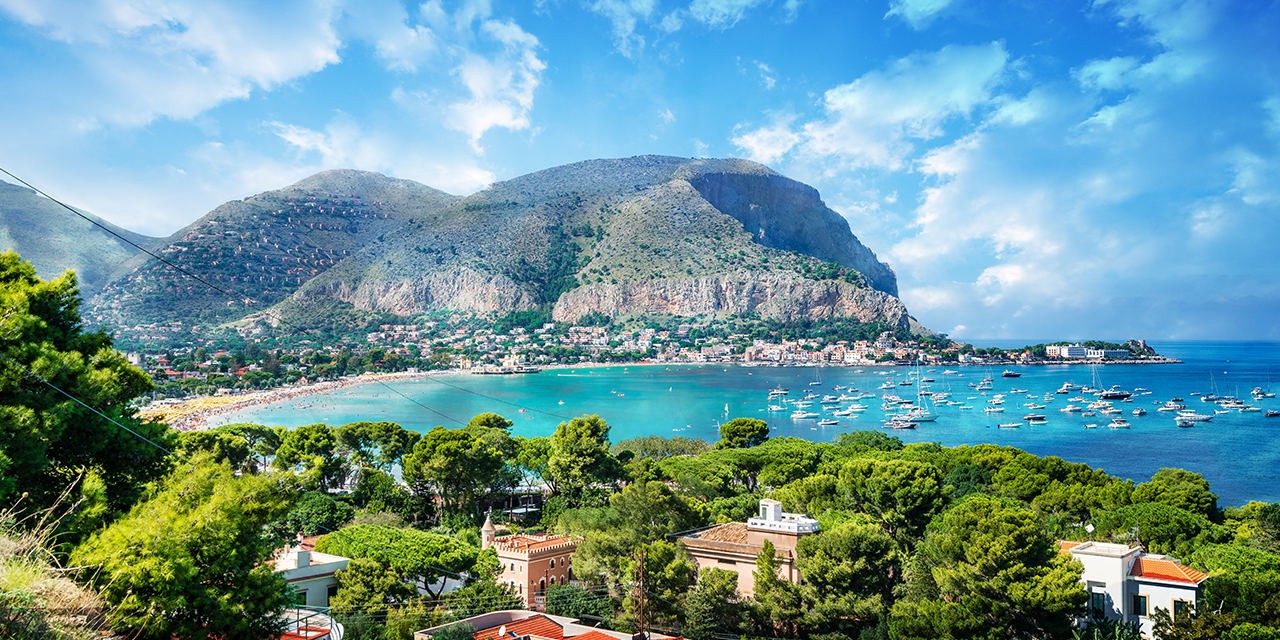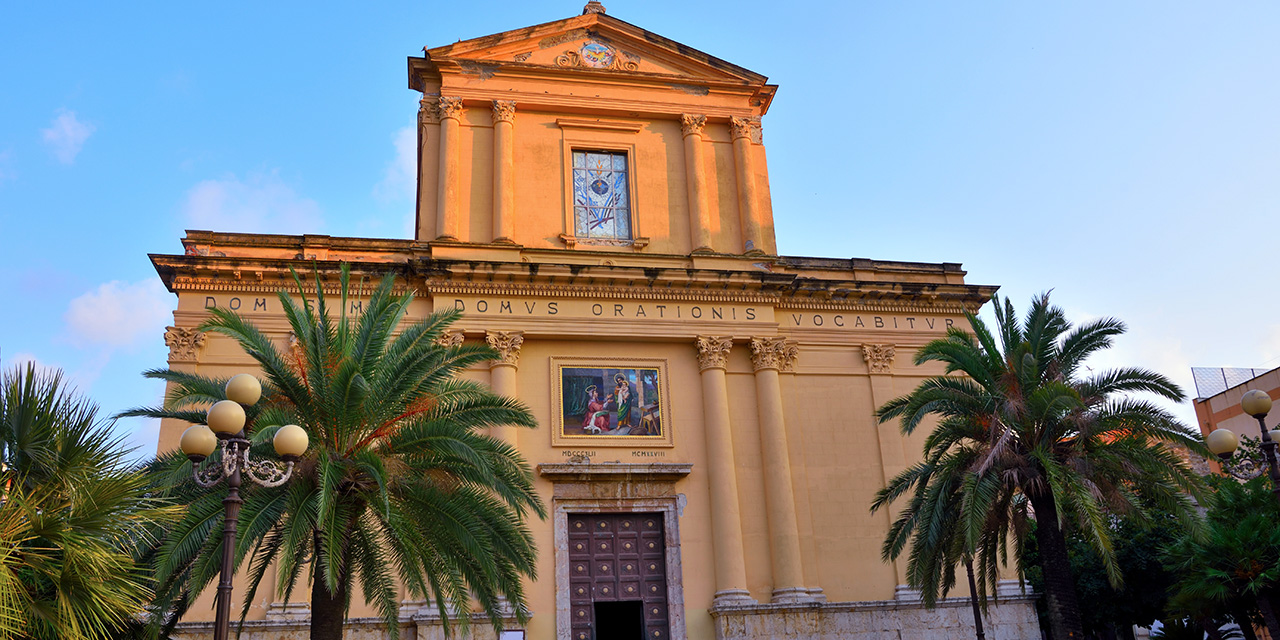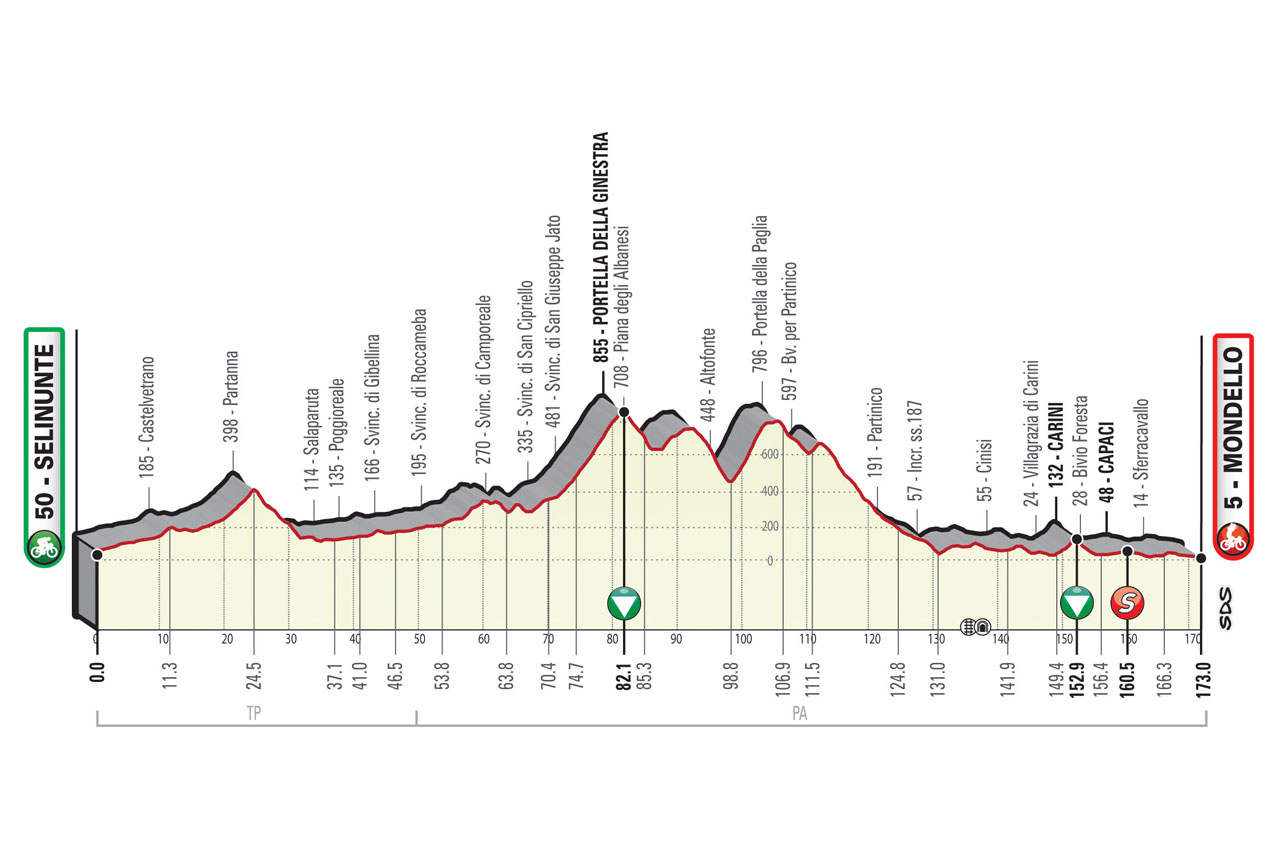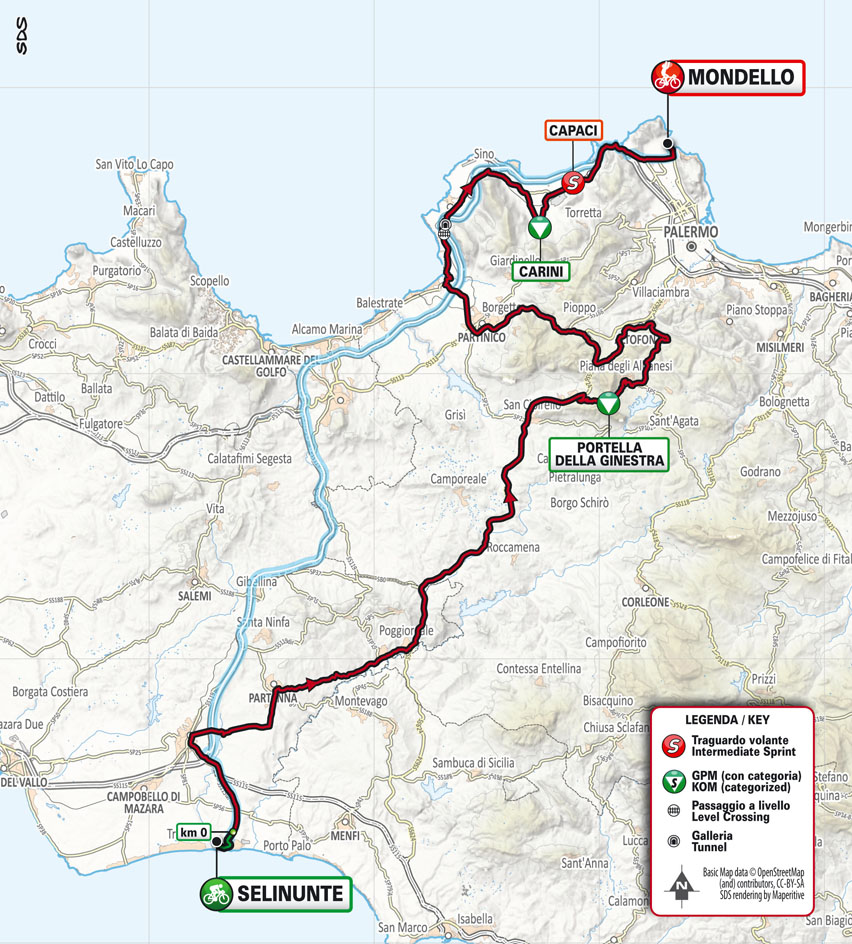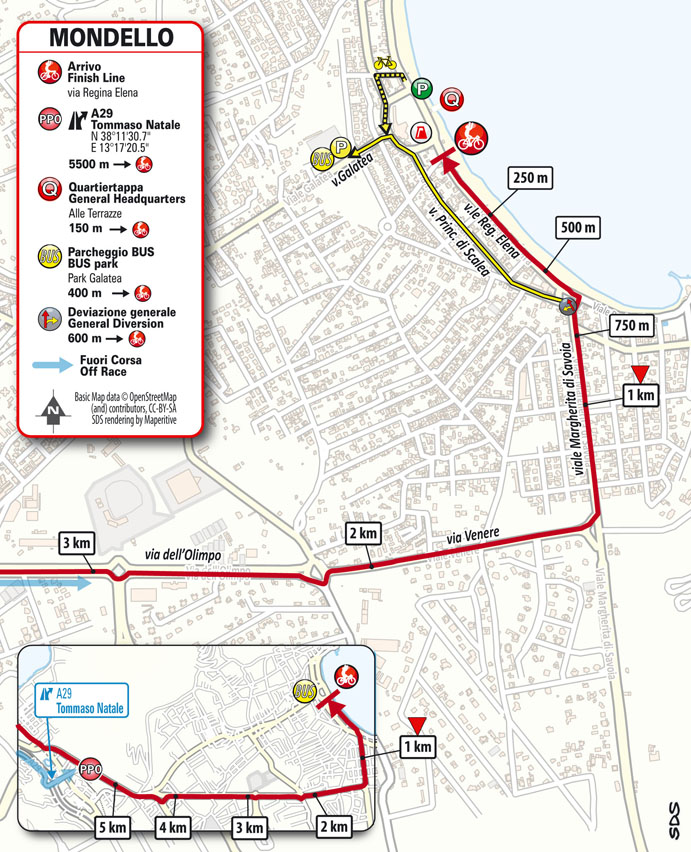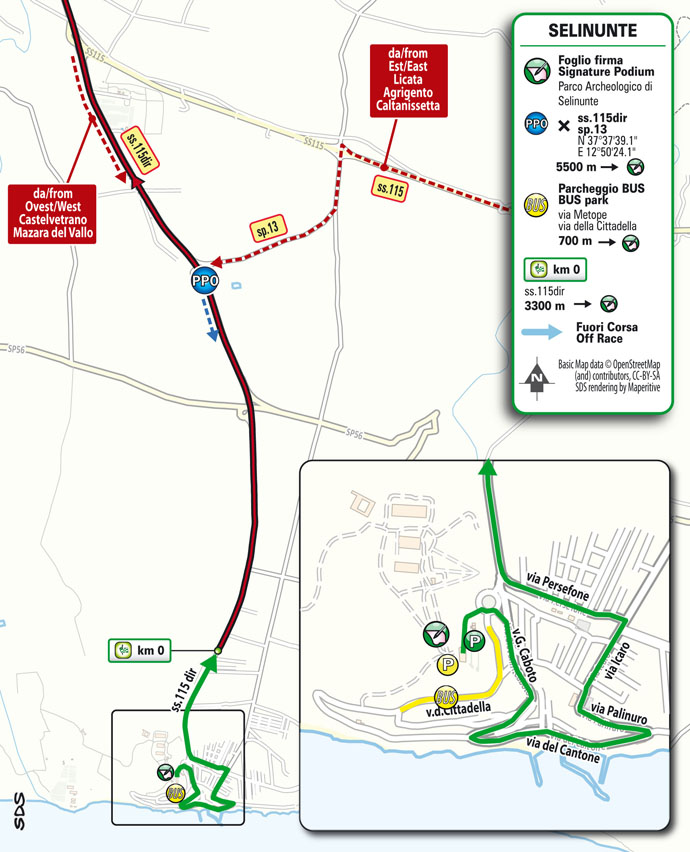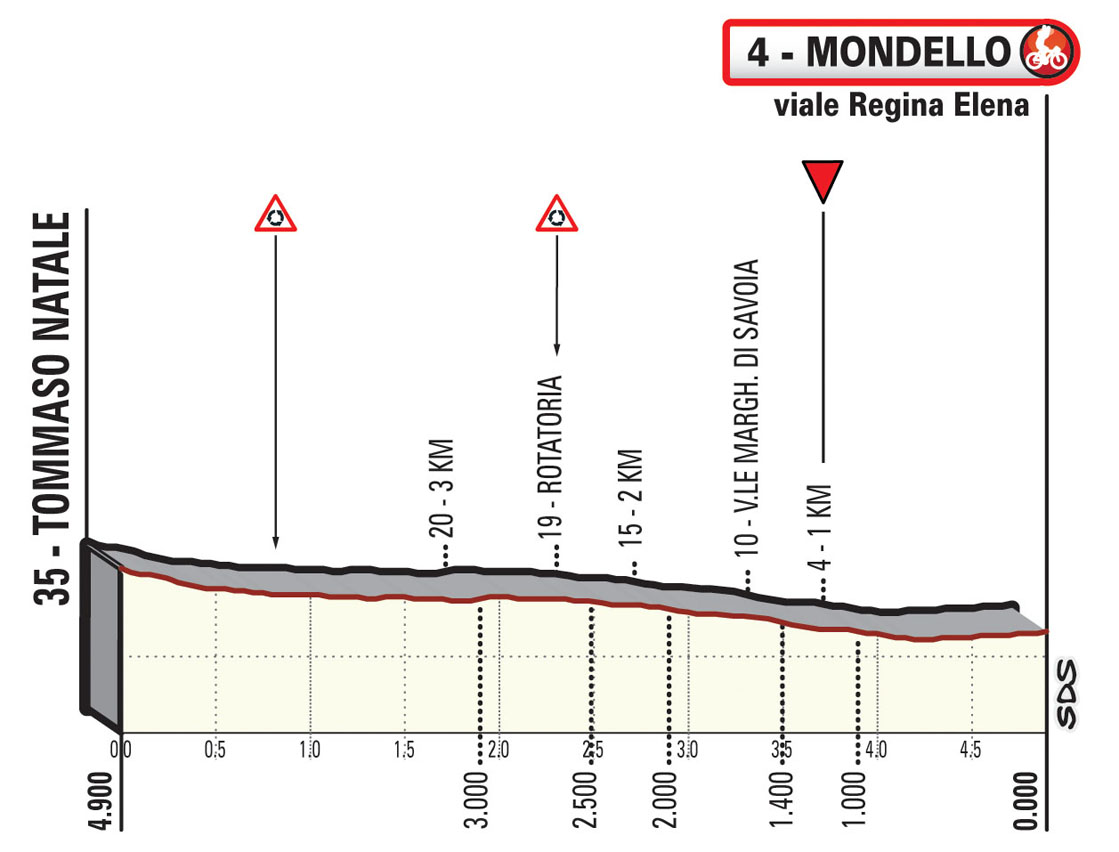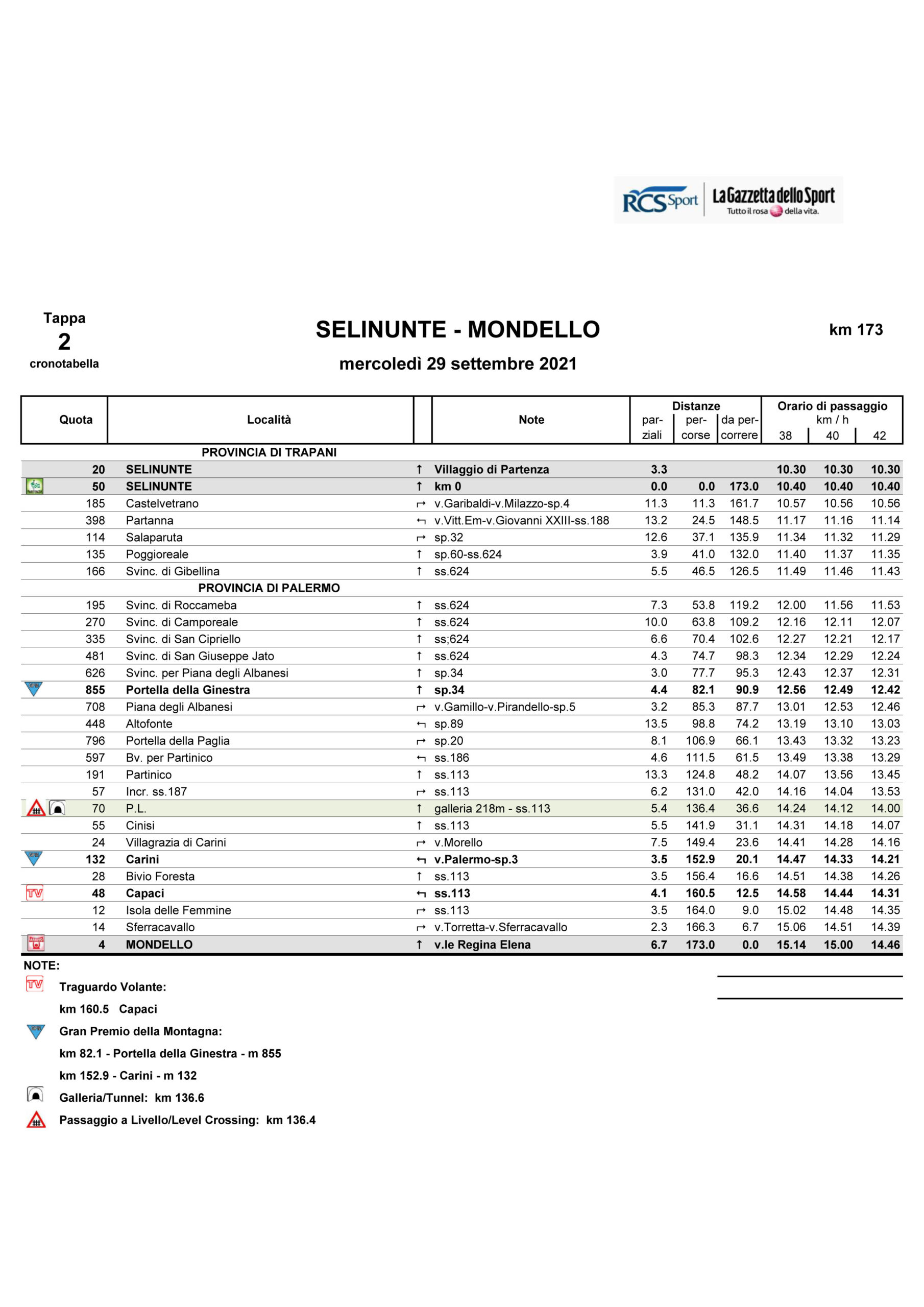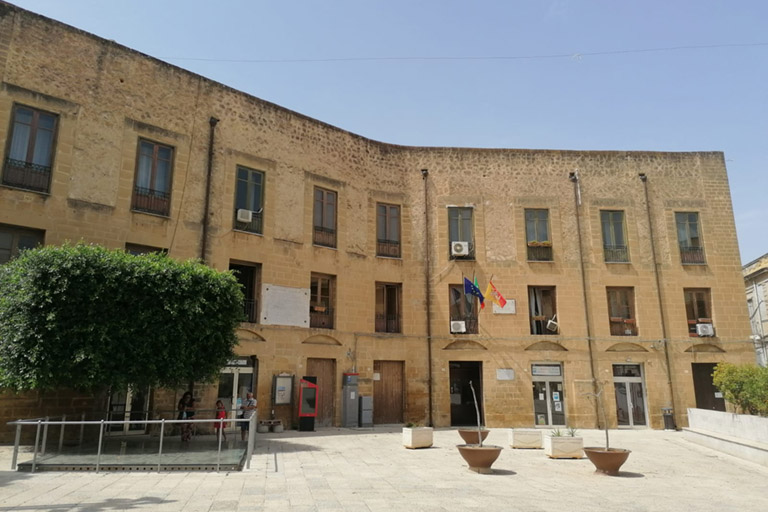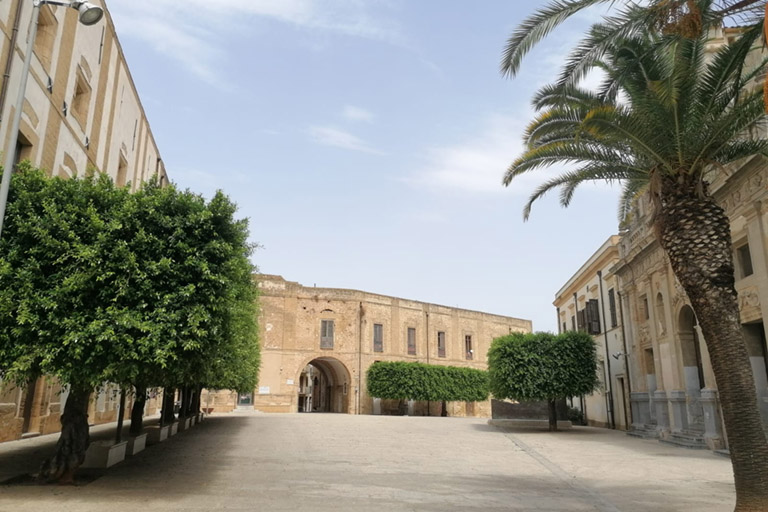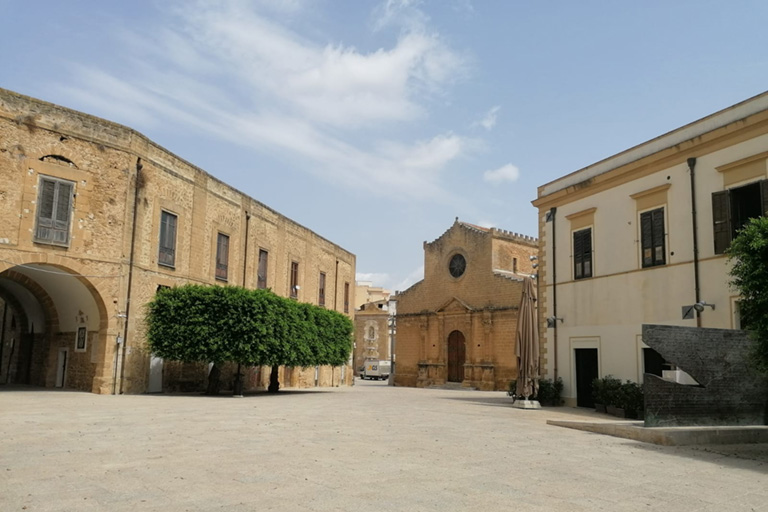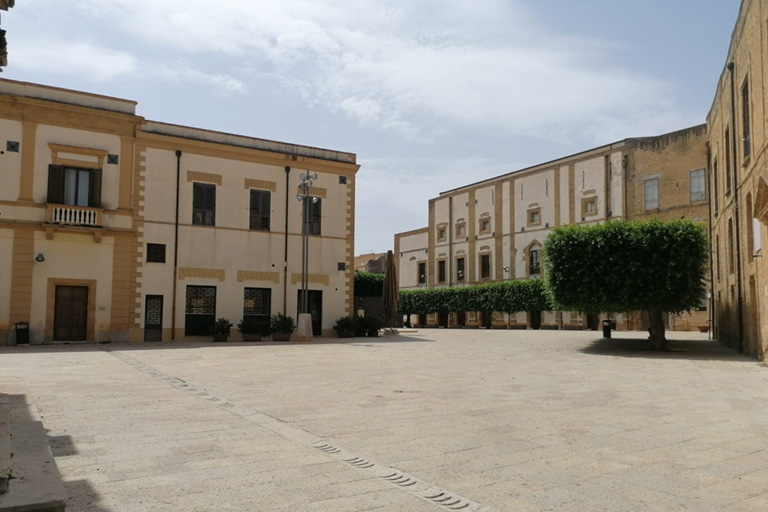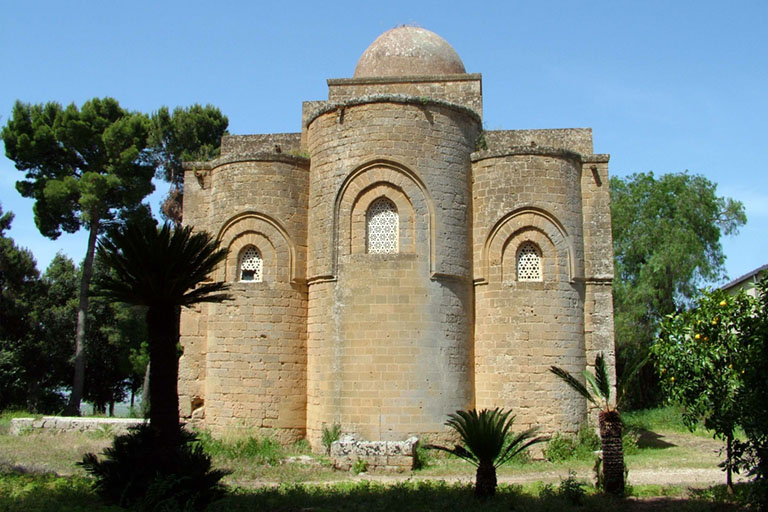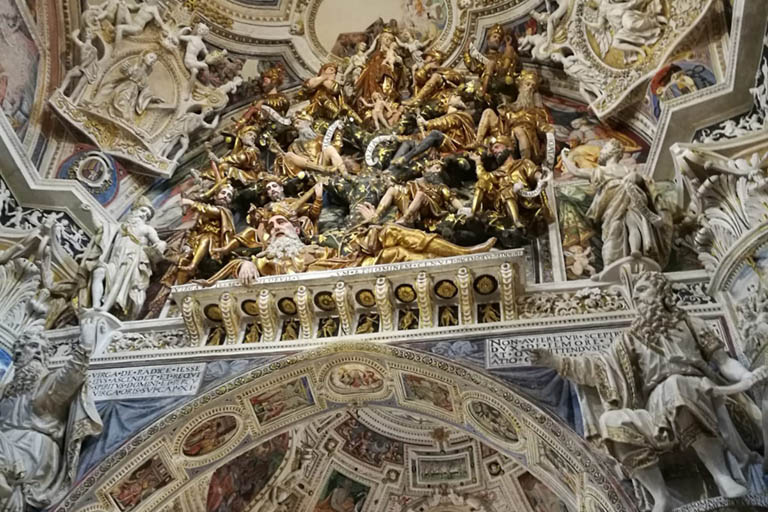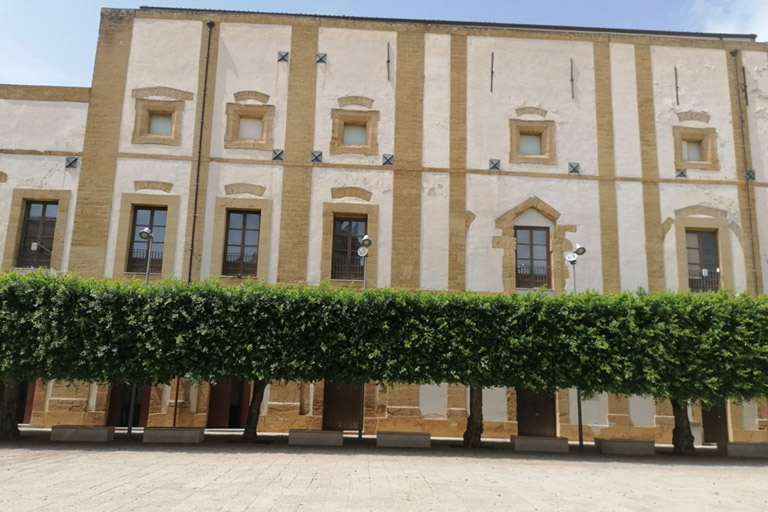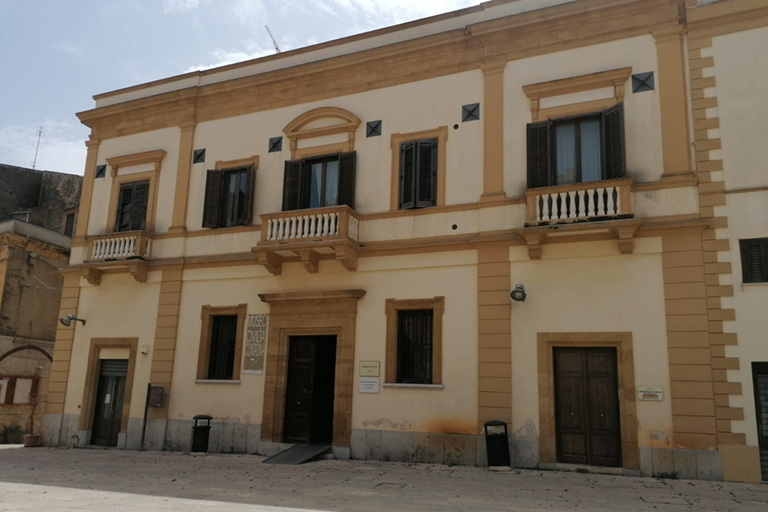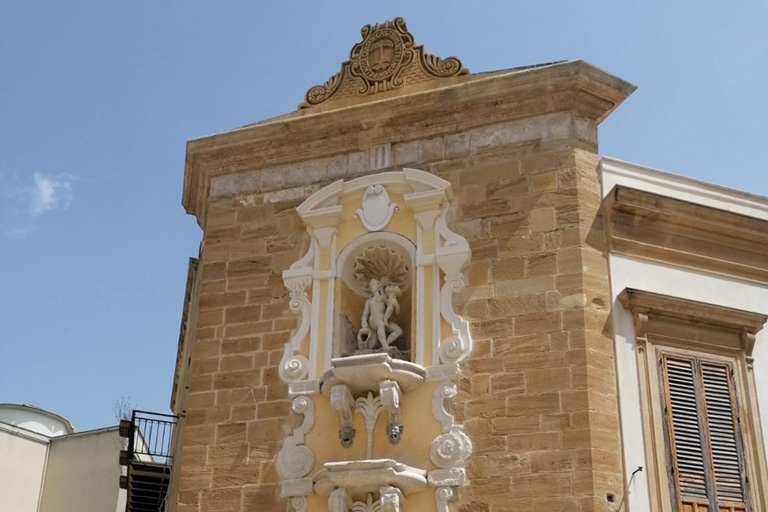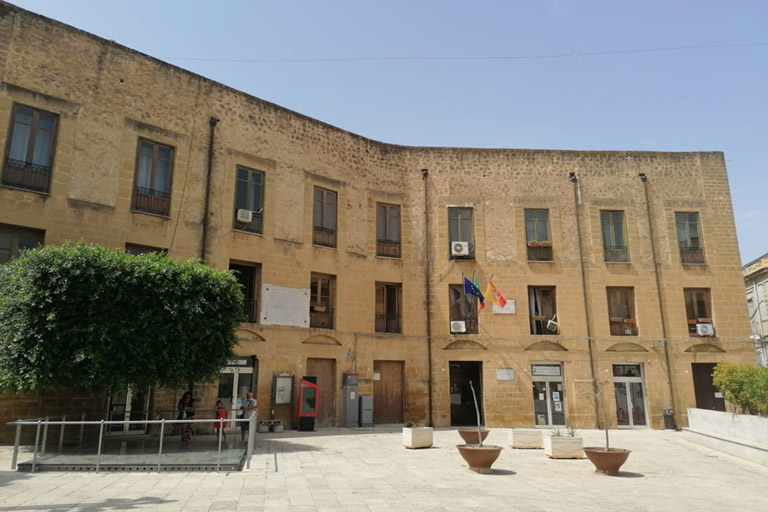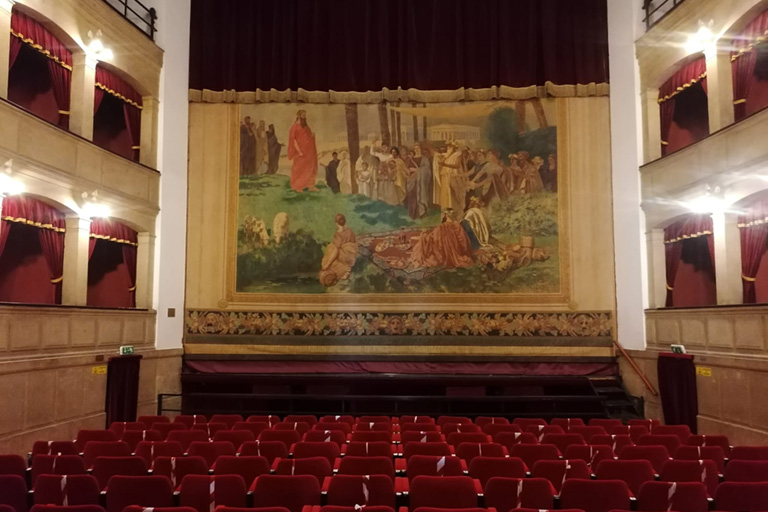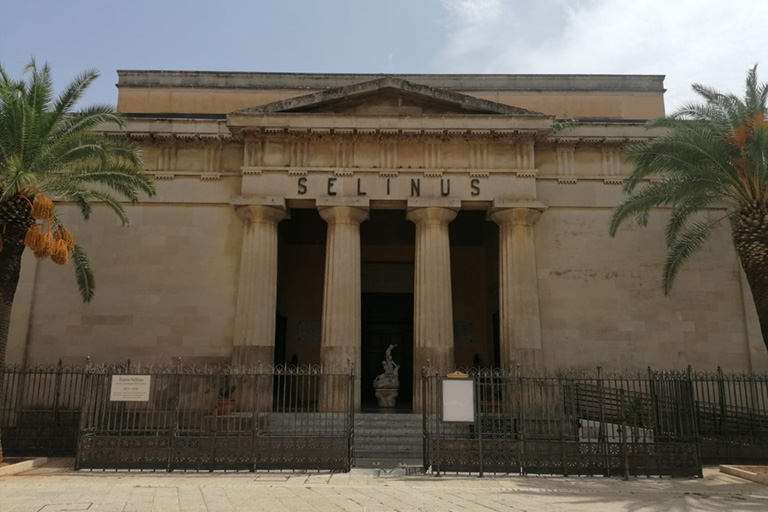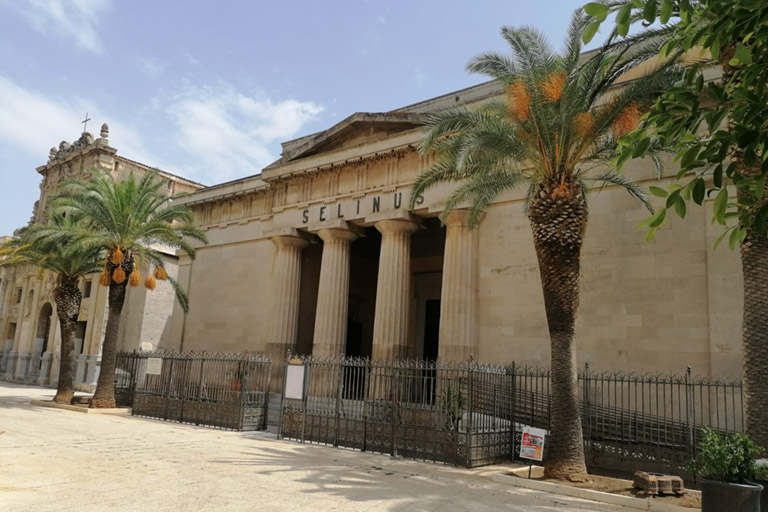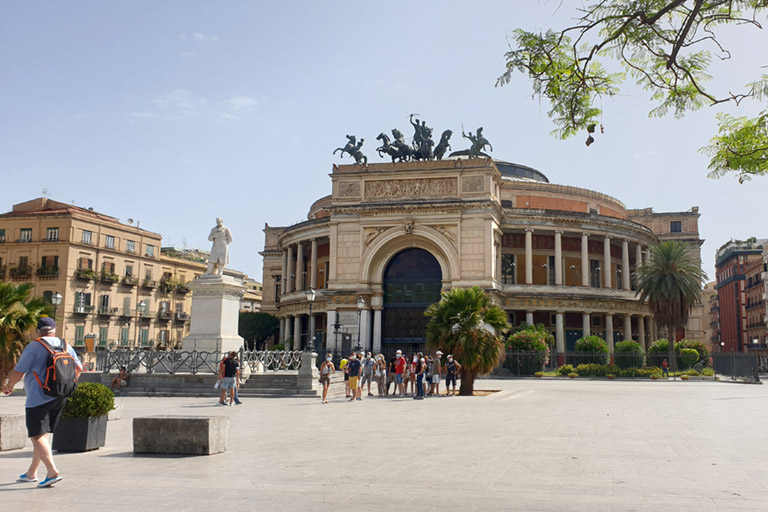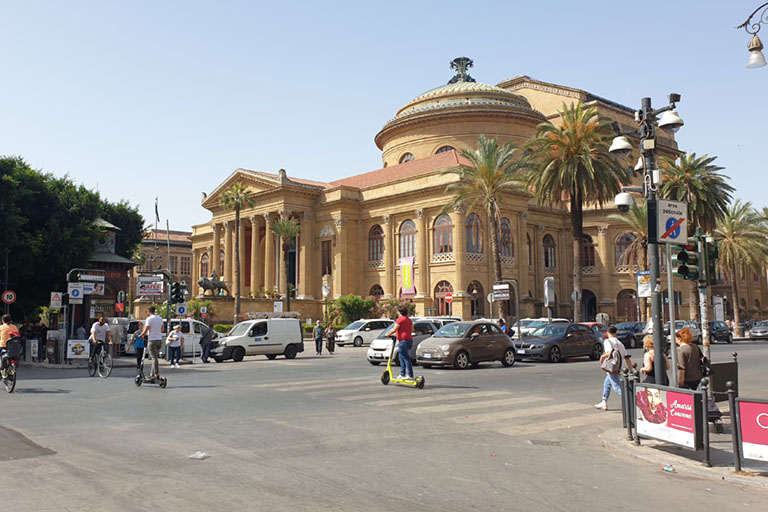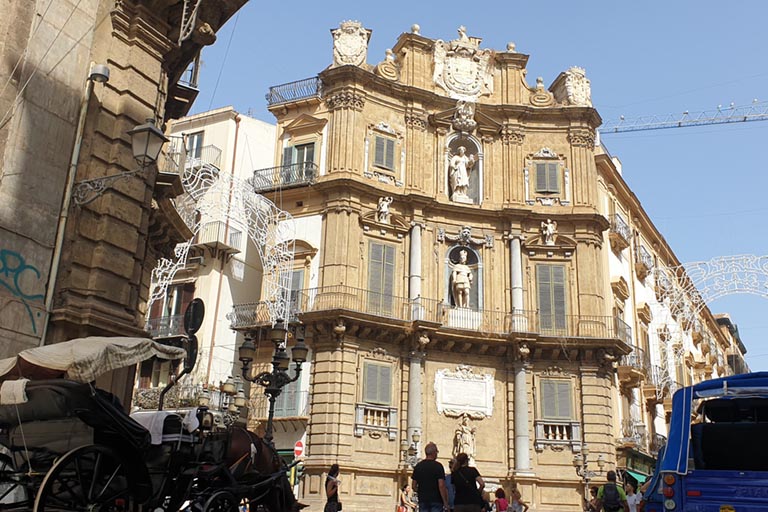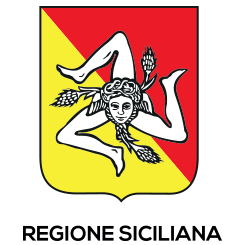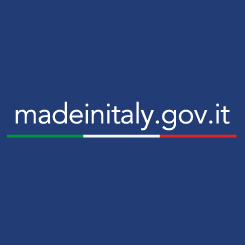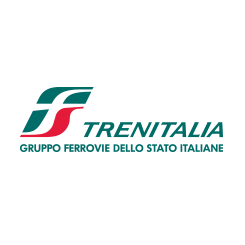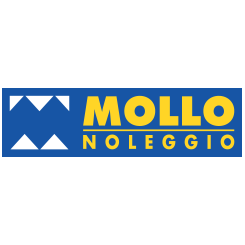profile
map
technical info
The route
After taking in a few mild undulations in the first part, the route climbs up Portella della Ginestra. A succession of somewhat arduous ascents and descents then leads all the way to the coast, past Partinico. Over the last 30 km, the route takes in a short, yet steep, categorised climb in Carini. The approach to Palermo is on technically demanding roads, with steep downhill sectors and a succession of roundabouts.
Final kilometres
The stage finale is raced on tarmac, with just a few mild bends and no major obstacles to report. The home stretch is on 8 m wide, flat and asphalt road.
start / finish
final kilometres
itinerary timetable
tourist info
Host city:
Selinunte (Castelvetrano)
Touristic information
Castelvetrano lies in the Valle del Belice, between the hilly hinterland and the southern coast of Sicily. The town has played a key role in all the most significant events of the history of the region, and is currently the major centre of the entire Valle del Belice.
Points of interest
The church of San Domenico and the adjacent convent of the Order of Preachers, which form a single monumental complex, are the major monuments. The church contains a majestic stuccowork which depicts the Tree of Jesse, namely the family tree that branches and ascends from Jesse, the father of King David, to the blessed Virgin Mary.
The Santissima Trinità, also referred to as Cuba di Delia, is a small and beautiful Norman church, built in the early 12th century, found just outside the town.
Particularly notable among the secular buildings is the baroque Palazzo Pignatelli Aragona Tagliavia Cortes, which currently houses the municipal offices.
The territory of Castelvetrano is home to Europe’s largest archaeological park (approx. 270 hectares), which contains the ruins of the ancient town of Selinunte, including temples and other secondary architectures. The famous “Efebo di Selinunte” is the most important artefact found in the area (a statue of a male adolescent), which is currently on display at the Civic Museum of Castelvetrano.
Mondello (Palermo)
Touristic information
Palermo lies in an area of flat land along the northern coast of Sicily, between the Tyrrhenian Sea and the Monti di Palermo, called Conca d’Oro. After being the capital of the Kingdom of Sicily for nearly 700 years, the city is now the regional capital, and the fifth municipality in Italy by population.
The city was settled by numerous peoples throughout its long history, and hence became a melting pot of trends and styles, as well as a major cradle of art.
Palermo has a warm Mediterranean climate, which makes it an ideal destination for seaside tourism. The classy seaside district of Mondello is especially renowned for its beautiful beach and its elegant Art Nouveau villas.
Gastronomy
Besides art and history, culinary art is also a claim to fame for Palermo. Traditional local specialties include sweets and desserts, often made with ricotta sweet cream such as cannoli or cassate, and street food, such as sandwiches with spleen, or chickpea fritters, and the iconic rice balls, “arancine”.
Points of interest
As a testimony to this mingling of cultures, multiple sites were designated, collectively, as UNESCO World Heritage in 2015. The series was named “Arab-Norman Palermo and the Cathedral Churches of Cefalù and Monreale”. It comprises nine outstanding examples of Arab‑Norman architecture dating from the era of the Norman kingdom, seven of which in the city of Palermo.
These include the ancient Palazzo dei Normanni, also known as Royal Palace, one of the oldest in Europe, and currently the seat of the regional council of Sicily. Inside, on the first floor, the building houses another UNESCO World Heritage site, the Palatine Chapel. This beautiful Norman‑Byzantine basilica, which Roger II of Sicily had consecrated in 1140, is famed for its Byzantine mosaics, its Cosmatesque flooring and its carved ceiling, crafted by Fatimid and Iranian masters.
Built starting in 1184, the Cathedral is considered as the “storybook of Palermo”, because it bears the traces of all the dynasties that ruled the city throughout the centuries. Other historical and architectural landmarks include the Zisa Palace, completed around 1167, a favoured summer abode of the royal families, and currently the seat of the Museum of Islamic Art. The Teatro Massimo Vittorio Emanuele, better known as Teatro Massimo, is the largest opera house in Italy, and one of the largest in Europe, ranking third after the Opéra National of Paris and the Staatsoper of Vienna.


